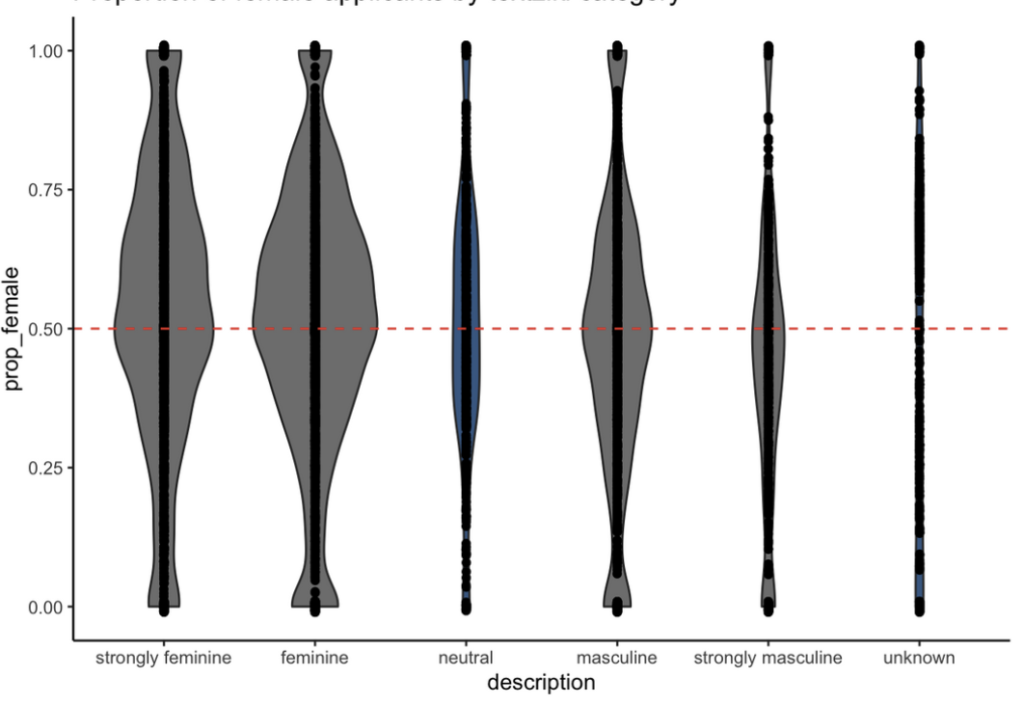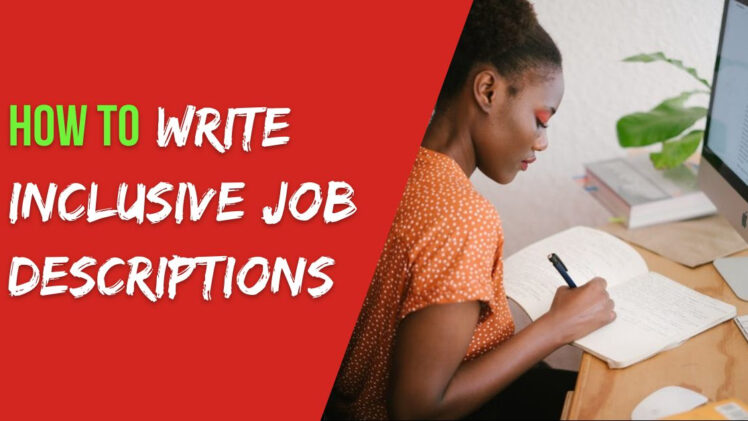Did you know? How you word your job descriptions will have a direct impact on who applies.
If you’re struggling with either volume (specifically a lack thereof) or diversity, then your job descriptions could be to blame.
Words, phrases and even the number of requirements you specify all bear subconscious meaning that may be causing candidates to gloss over your job descriptions.
Benefits of more inclusive job descriptions
- Attract more candidates
- Improve the diversity of your candidate pool
- Even attract better quality candidates
Gender-coded language
The words and phrases you use in your job description can signal whether or not someone would belong, should they get the job.
Although you may be completely unconscious of it, you’re painting a picture of the type of person you’re looking for – and candidates who feel they don’t ‘fit the bill’ will qualify themselves out.
Using masculine coded language in your job description will deter female candidates from applying. By outlining characteristics generally attributed to males, you’re signalling that a man would be best suited to the role.
Examples of masculine coded terms
- Aggressive
- Ambitious/Ambition
- Analytical
- Assertive
- Autonomous
- Decisive
- Determined
- Independent
- Lead
Examples of feminine coded terms
- Considerate
- Cooperate
- Depend
- Honest
- Interpersonal
- Loyal
- Pleasant
- Polite
- Responsible
- Support
Source: Sussex.ac.uk
Over here at Applied, we did our own research on gendered language. We wanted to see how the use of language affected who applied via our job descriptions.
Take a look at the violin plot below – the thickness of each column represents the number of applications received:

Source: Applied
Key takeaways:
- More female applicants when the job description was feminine coded
- Fewer female applicants when coding was masculine
Ideally, you should be aiming for either neutral or feminine-coded job descriptions.
Although this might sound like bias against males, they are not as deterred by feminine-coded language as females are by masculine language.
Requirements
The number of requirements you list can also have an impact on the volume and diversity of applications you receive.
Whilst most job descriptions are broken down into ‘essentials’ and ‘nice-to-haves’, more risk-averse candidates will read the latter list as being requirements and qualify themselves out.
Requirements can also affect gender diversity: Research has proven that women tend to apply only when they meet 100% of criteria, whilst men will apply if they meet just 60%.
This is mostly likely the result of the fact that women are more socialised to follow rules – whilst men are generally more socialised to believe that rules are meant to be broken.
If you list excessive requirements the reality is that some candidates will see them as being actual requirements whilst others will see them more as desirables that they don’t need to have.
And if you thought this is only relevant in the context of gender, you’d be mistaken: risk-averse men can also be put off by a lengthy list of requirements too. More requirements means more chance of candidates deeming the role too much of a risk to be worth their time.
It’s worth noting that being risk-averse has no bearing on how talented or capable someone is.
If you only had time to apply to a limited number of jobs, you’d probably choose the ones that you thought you had a chance of getting. Tough requirements don’t necessarily ‘weed out the weak’ – they just deter potentially great candidates.
The more requirements you set out, the fewer applications you’ll receive.
The best practice for requirements is to keep below 10 – and if possible, ditch nice-to-haves altogether. If something can be easily taught, it doesn’t need to be in the job description.
You may also want to rethink minimum years of experience and education requirements.
According to this landmark metastudy, both education and years experience are both fairly poor at predicting real-life ability.

Source: Schmidt & Hunter, The validity and utility of selection methods in personnel psychology
If someone has the skills to do the job, does it really matter where or how they acquired these skills? As long as you’re testing for skills early on in the hiring process, axing education and experience requirements won’t be as risky as you think!
Readability
Write your job descriptions at a reading level required for the role.
If you’re not hiring a wordsmith, there’s no need for long, complex sentences and terminology.
This doesn’t mean that you’re lowering the bar in any way, shape or form.
In fact, quite the opposite…
The most in-demand talent may be busy, distracted or reading off of a screen that’s hard to see, so you’ll want your job description to be as to-the-point and digestible as possible.
As a general rule of thumb, it’s best to stay between 300-800 words, since shorter job descriptions have actually been proven to attract more candidates.
Candidates take around 14 seconds to make their mind up based on your job description. So, make sure you cut to the chase! Instead of paragraphs, try sticking to bullet points – even for the description of the role.
When it comes to writing readable job descriptions, you should also beware of jargon.
It’s perfectly acceptable to use extremely common, industry-standard terms (like PPC or B2C). However, niche, technical jargon is unnecessary. Not only will it put people off who don’t know what it means (who may still be talented!), but it also gives the impression that your organisation is cold and corporate.
Benefits
Candidates may have responsibilities or commitments outside of work that make flexible working essential, such as parents of young children and careers.
Make sure you’re upfront about any remote/ flexible working options – as this could be the difference between the candidate picking you versus your competitor.
Similarly, you should specify the salary where possible, even if just a range.
Not everyone can afford to spend time applying for jobs that might not even meet their salary requirements. The same goes for internships… some individuals simply can’t afford to work for free for 6-12 months.
Not only will this cast your net wider, but it’ll also give you an edge over your competition since most companies don’t publicly publish their salaries.
Company culture
Jobvite’s study found that 46% of job seekers cite company culture as very important when choosing whether or not to apply for a job.
If a candidate doesn’t feel like they’d fit into your company, they’re unlikely to apply.
Be as transparent as possible around what it’s like to work at your company and what they can expect from the people and culture there.
Candidates are put off by a fear of the unknown – so do all you can to put them at ease.
If you’re committed to diversity and inclusion, then make sure you make a point of letting candidates know – Glassdoor found that 57% of employees want their company to do more to increase diversity.
Let candidates know that they’ll be included and respected equally, regardless of their background
Next steps
Your job descriptions should be as transparent as you can make them.
At the bottom of the job description, give candidates an idea of what the next steps would be. This doesn’t need to be detailed, just an overview of what the proceeding stages of the hiring process entail is enough.
Putting it all together
Inclusive job description criteria:
- Neutral of feminine coded language
- Under 10 requirements
- 300-800 words
- Low reading burden
- Specifies benefits and salary
- No unnecessary jargon
- Provides information about team and culture
- Examples next steps of process













